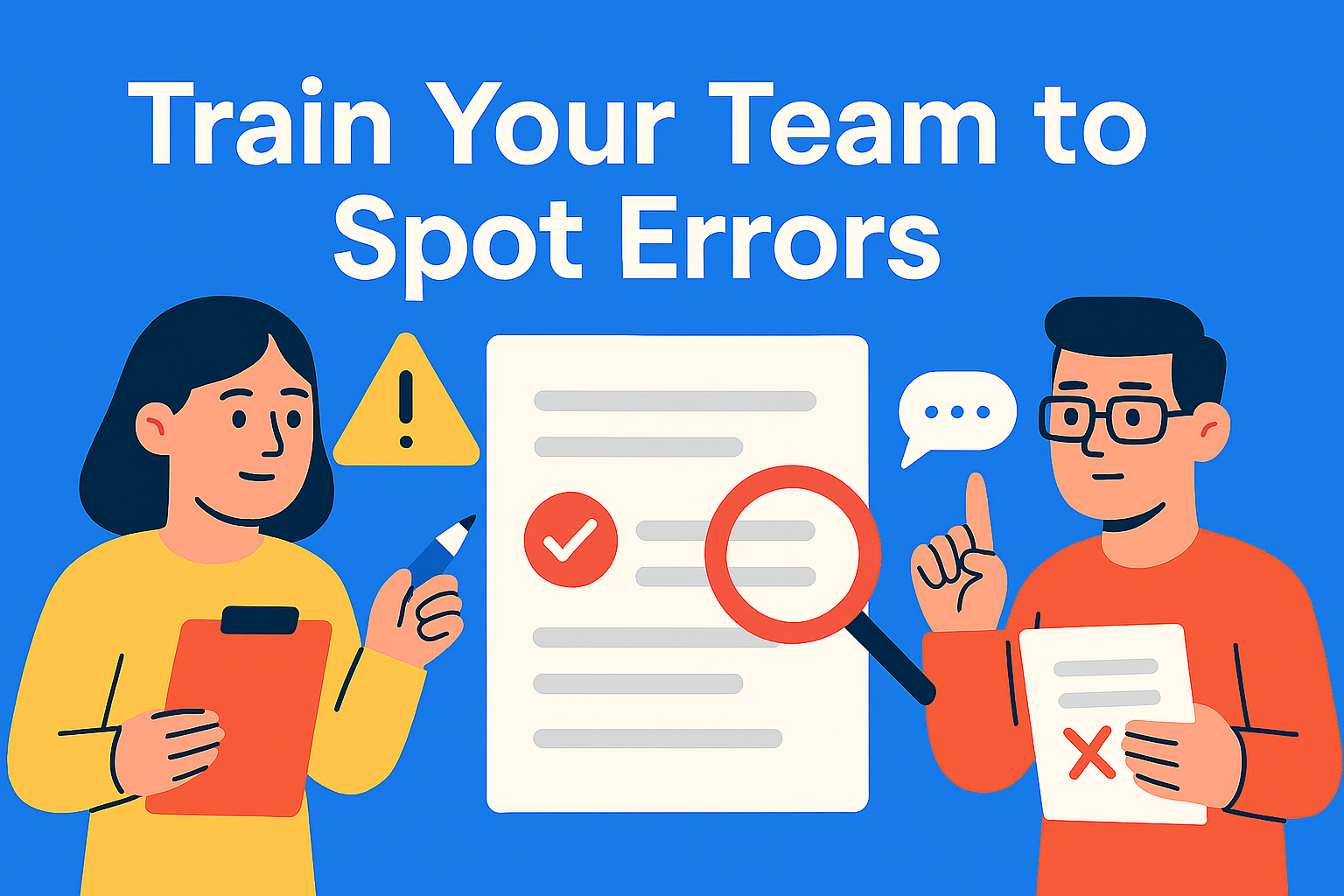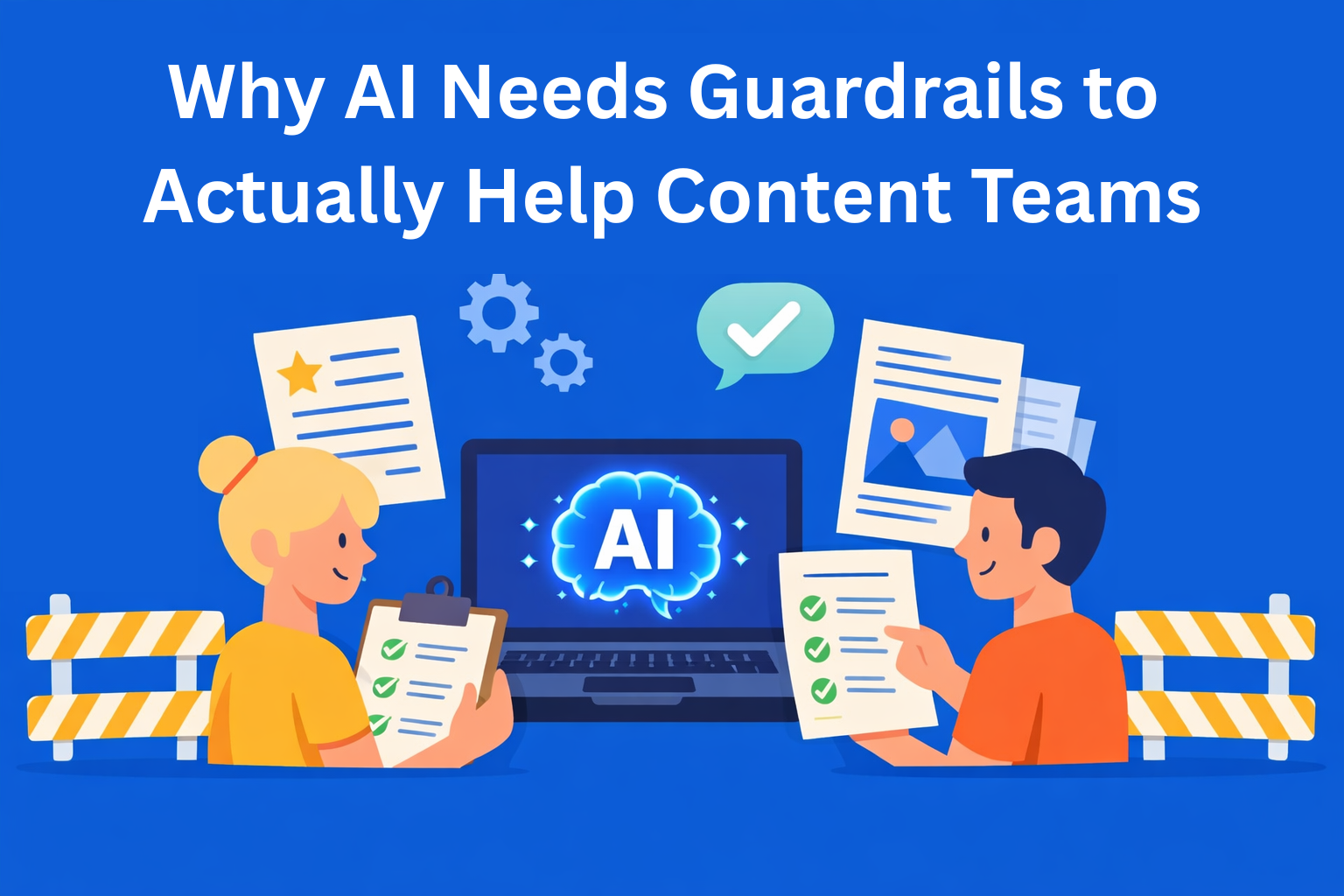Train Your Team to Spot Errors: Using AI Drafts as Practice Material
Turn generative AI into a content training tool. Instead of just creating drafts, use AI to produce flawed posts your team can spot, fix, and improve. Build editing skills, boost quality, and create a repeatable system for growth with tools like EasyContent.

We often think of GenAI as a production tool - something to generate first drafts, ideate blog topics, and repurpose existing content. But what if we flipped the script?
What if, besides using GenAI to publish faster, you used it to train your team?
That’s right. Generative AI isn’t just a tool for output - it can be your content team’s secret weapon for growth. And we’re not talking about vague writing tips or "how to sound more human." We’re talking about hands-on training: using AI to intentionally produce flawed content that your writers can spot, analyze, and improve.
Let’s dive into how you can turn AI into a kind of digital writing dojo.
Key Takeaways
- Flip the script on AI - Use generative AI not just for output, but as a tool for team training.
- Simulate real-world editing challenges - Prompt AI to create flawed drafts for writers to fix.
- Focus on key skills - Train on tone consistency, SEO optimization, clarity, and fact-checking.
- Make it structured, not chaotic - Use tools like EasyContent for templates, workflows, and grading.
- Build a repeatable system - Regular exercises improve critical thinking and editorial confidence.
Not Just Another Draft Machine
Content managers are already using AI to produce faster drafts, speed up brainstorming, and experiment with different tones. But there’s another, more strategic use case emerging: deliberate training exercises.
Here’s the idea: instead of treating AI as a finished product generator, prompt it to intentionally make mistakes, whether it’s: factual inaccuracies, inconsistent tone, structural issues, or even grammar flubs.
Then hand those drafts over to your writers.
Ask them to edit the draft, identify the problems, and rework the piece into something polished. It’s part editorial test, part writing warm-up, and part critical thinking challenge.
And best of all? You can do this repeatedly, with endless variations.
How to Set Up an AI-Powered Training Session
You don’t need a learning management system to do this. Just a clear objective, a few smart prompts, and a simple structure.
Here’s how it could look:
- Define the type of writing skill you want your team to develop
- Tone consistency
- Grammar and clarity
- Fact-checking
- SEO optimization
- Logical flow and structure
- Create a prompt for GenAI to simulate a broken draft
Use a prompt like:
"Write a blog post about remote work. Include at least three factual errors, use two different tones (one formal, one casual), and include an abrupt ending."
Or:
"Write a newsletter about productivity hacks, but make sure to overuse buzzwords, include run-on sentences, and contradict yourself at least once."
3. Give the draft to your team and ask them to fix it:
Encourage them to annotate, rewrite, and leave comments on what they found problematic.
4. Evaluate and provide feedback:
That’s where tools like EasyContent shine. You can use its grading system, where you set custom evaluation criteria (clarity, tone, accuracy, etc.) and assign them to your training content.
It’s like grading a high school essay, but way more relevant.
Use EasyContent to Build a Repeatable System
Training exercises shouldn’t live in Google Docs chaos. With EasyContent, you can:
- Create dedicated training templates with built-in guidelines (e.g., "Focus on tone consistency and SEO heading structure").
- Create projects in your workspace only for training, each with their own deadlines and reviewers.
- Use roles and workflow steps to control who writes, who reviews, and who approves.
- Customize grading criteria so editors can give feedback tied to specific goals.
You’re not just tossing a broken draft into Slack and hoping someone learns from it - you’re turning it into a proper training loop.
5 Prompts to Get You Started
Here are a few prompts content managers can plug into GenAI tools to generate training-ready drafts:
Structural Flow Prompt:
"Create a blog that jumps between topics, lacks a clear introduction or conclusion, and has awkward transitions."
Buzzword Overload Prompt:
"Write a thought leadership piece on remote work using excessive jargon, corporate lingo, and vague phrasing."
Factual Accuracy Prompt:
"Write a post about the history of email marketing, but include at least three historical inaccuracies."
Grammar Test Prompt:
"Write an article about the benefits of hybrid work but include inconsistent punctuation, improper sentence structure, and passive voice."
Tone & Style Prompt:
"Write a blog post about time management. Start in a professional tone but slowly shift to a casual tone halfway through."
Helping Writers Spot the Misses
Once your team submits their edited version, don’t just mark it right or wrong. Use it as a moment to coach.
- Highlight what they fixed well. Did they catch the tonal shift? Smooth out the transitions?
- Point out what they missed. Maybe they overlooked a contradiction or a factual inaccuracy.
- Encourage peer review. Let them edit each other’s work and explain their choices.
The more they do this, the more they’ll build that editing muscle and the more confident they’ll be when reviewing their own work or someone else’s.
Final Thoughts: AI as a Creative Coach
GenAI isn’t just a productivity tool. It can be a training partner.
When you flip its purpose from writing content to testing your team’s skills, you unlock a new level of editorial depth. You’re no longer just editing for clarity; you’re editing with purpose.
And with tools like EasyContent, you can build a repeatable, structured workflow that supports that training over time. From templates to grading to workflow steps - you’re turning generative AI into part of your professional development plan.
Because better writers aren’t just born - they’re trained. And now, you’ve got a new way to train them.






